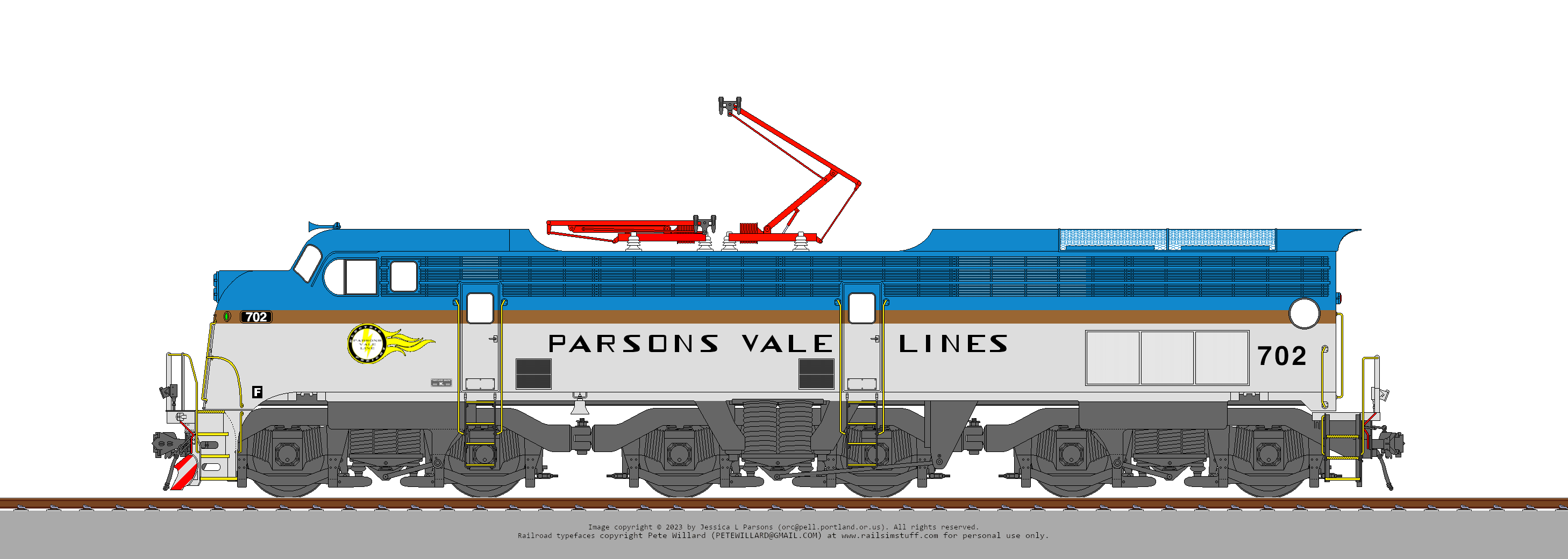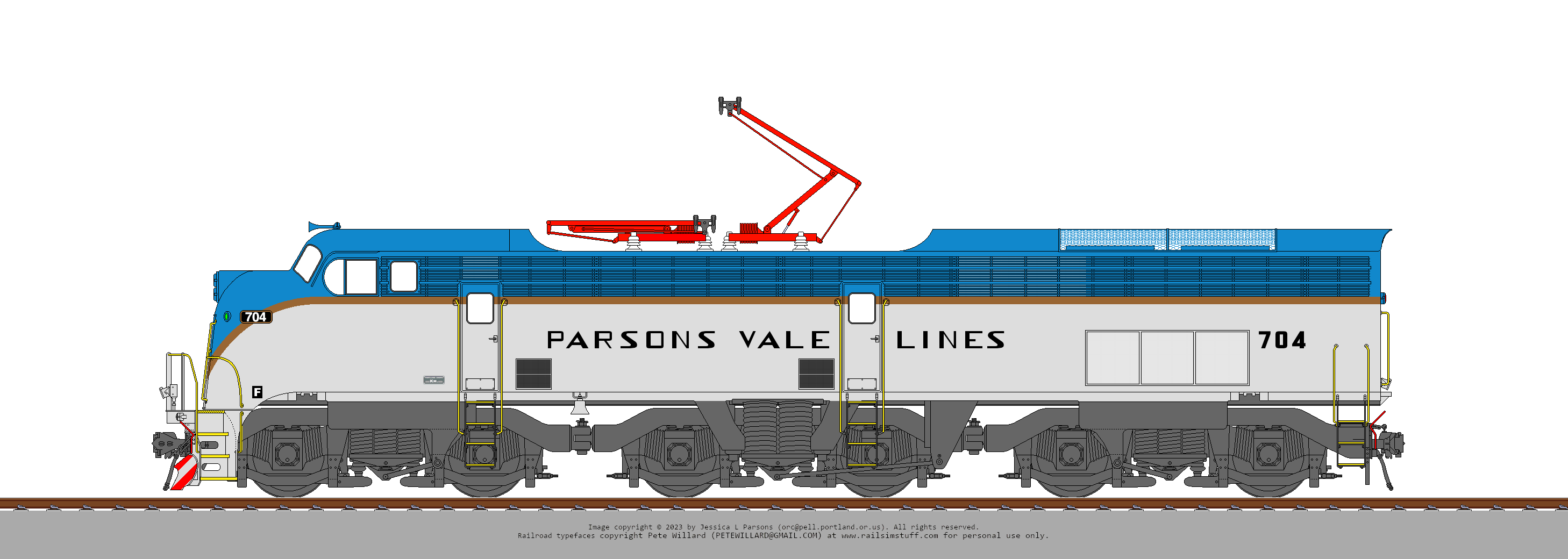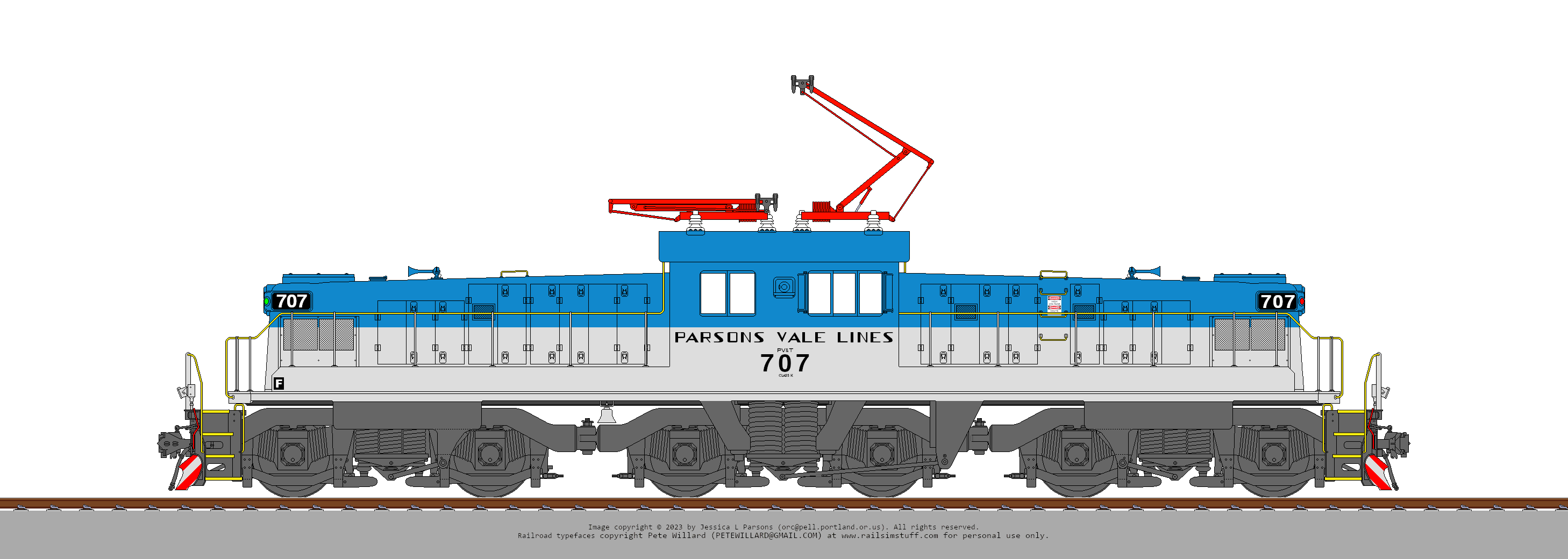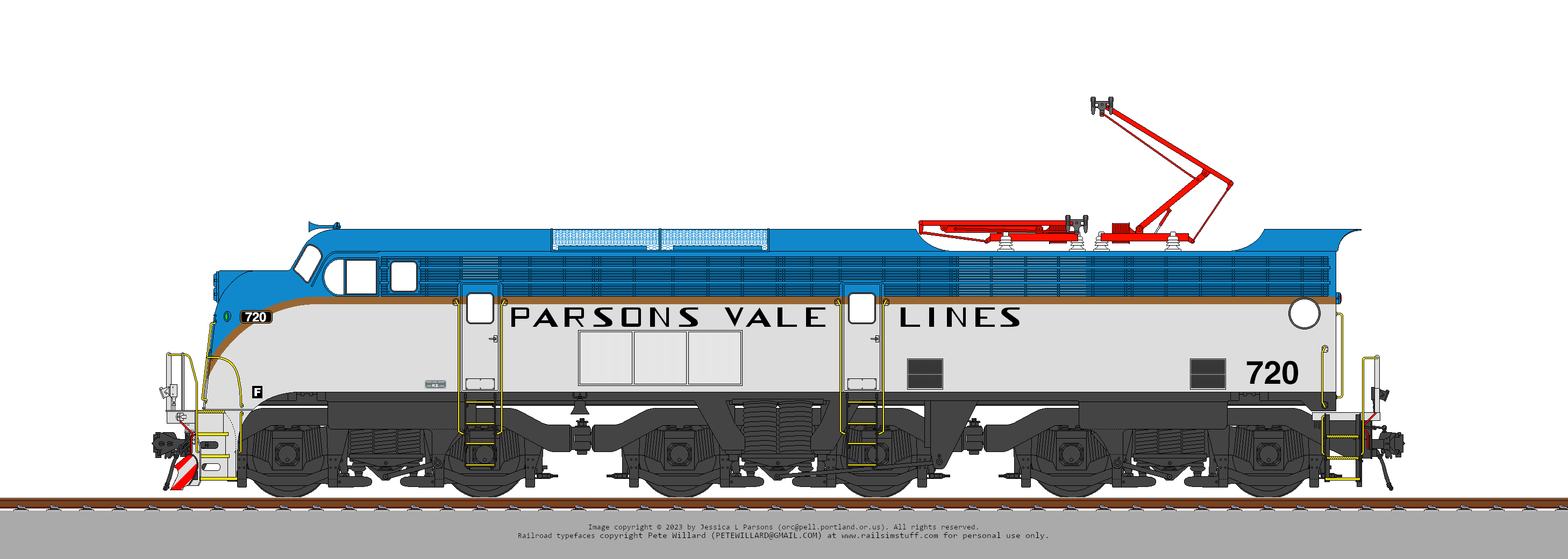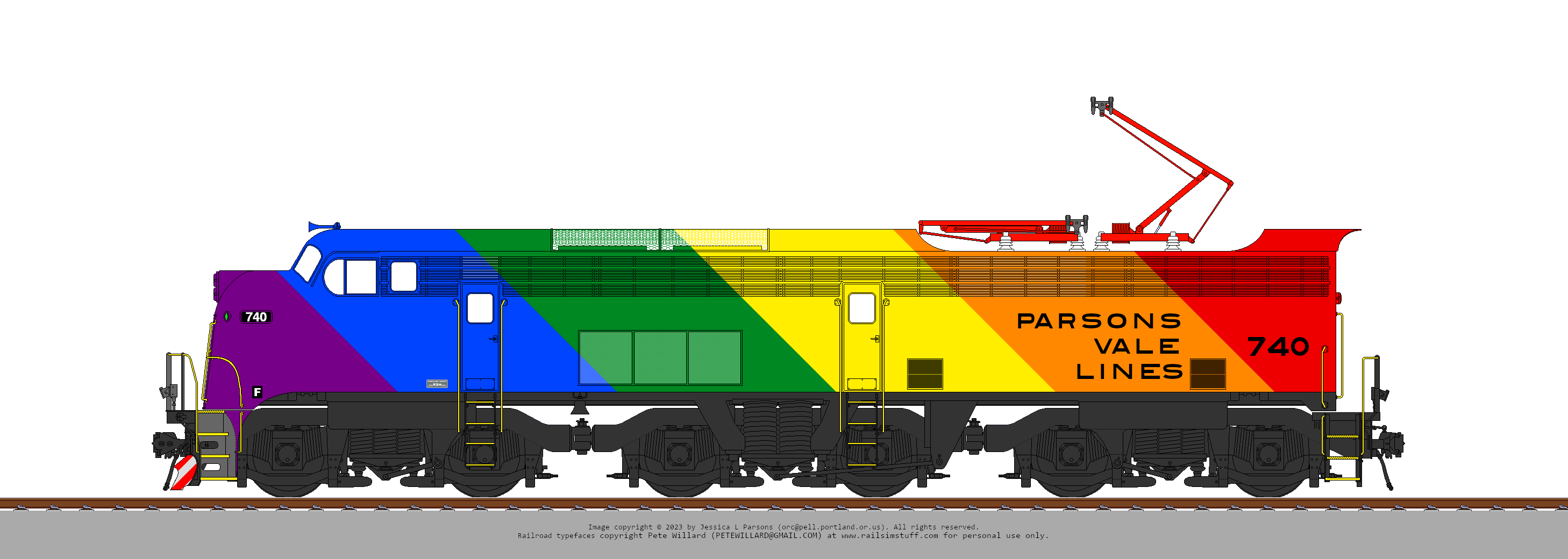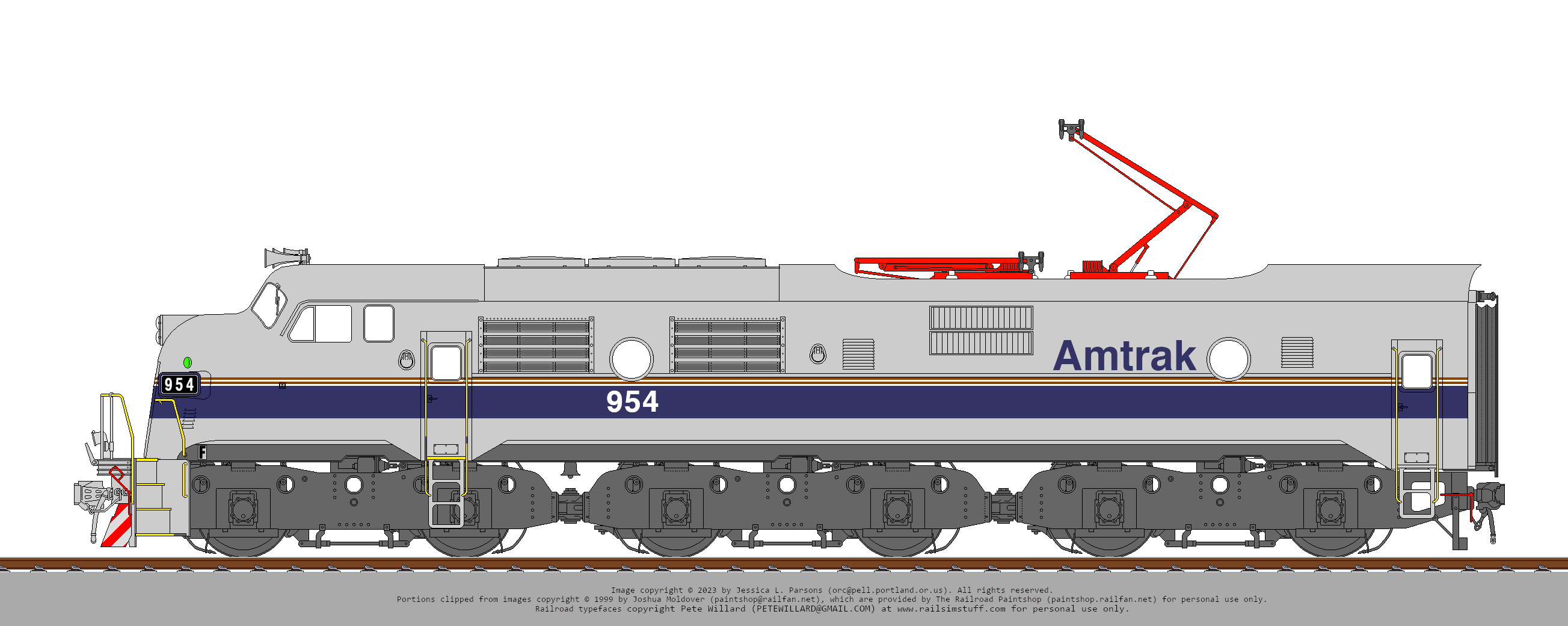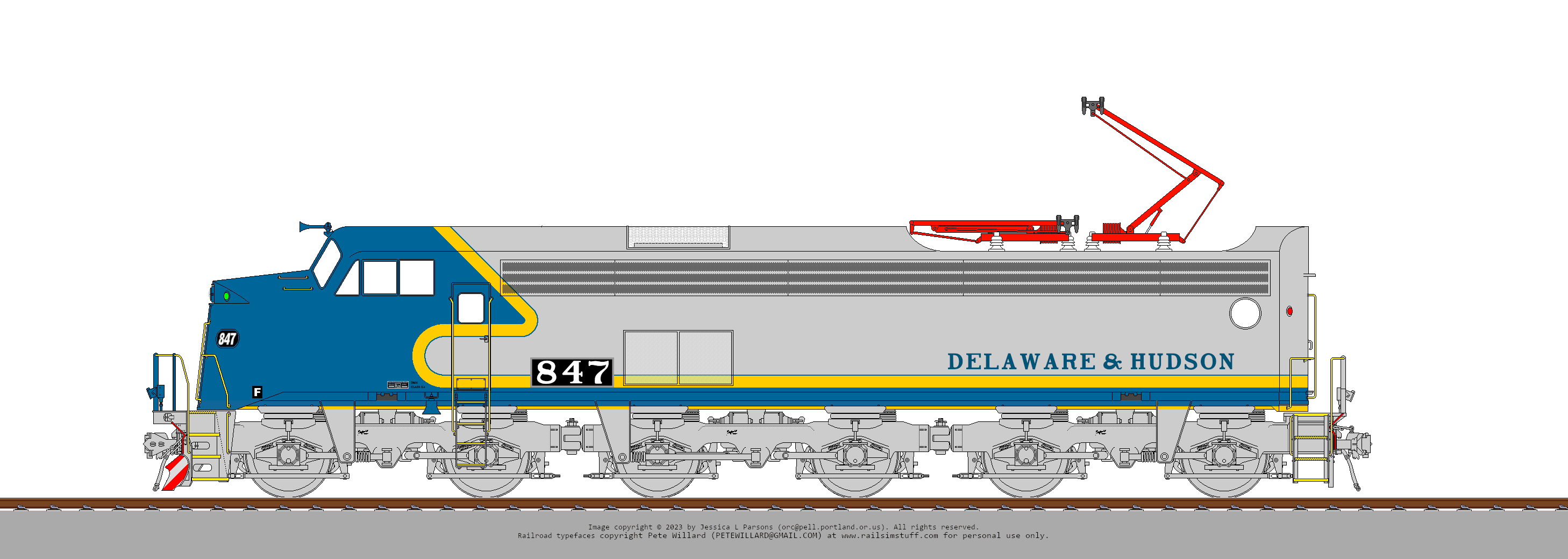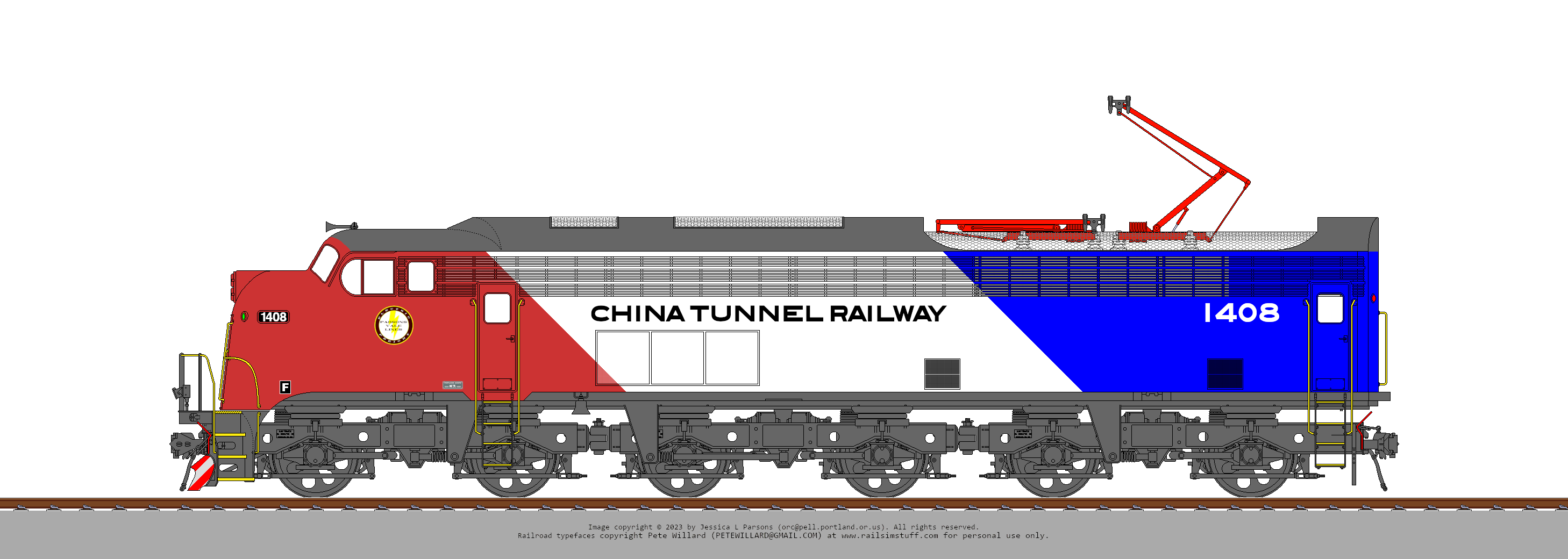The 1990s were not a great decade for railroads in Atlantic Canada & New England, but they weren’t as terrible as the 1980s, and the modest uptick in business plus electrifying parts of the D&H and BAR plus some of the really old class B motors starting to reach the point where the Portland shops couldn’t keep them running meant that a bunch of new motors were needed.
22 new class J2 motors helped, and the solitary FF3 didn’t hurt, but the railroad wanted something to fill the gap between the superpower motors and the regular road switchers; the class K streamliners filled that gap.
The first class K motors, like the previous class I & class J motors, used a DC variant of the ASEA/ABB high-horsepower drivetrain prototyped by EMD’s GM6C, with EMD-supplied articulated (a designe requirement by the Portland Shops) GM10B-style radial trucks in a B+B+B wheel arrangement. They weighed in at ~200 tons, producing 6500 HP & 515 kN of starting tractive effort, while capable of being operated at up to 80 mph.
Since introduction, there have been 8 versions of the class K (plus 4 modified versions): the OG streamlined cab, the OG hood units, the multi-system rebuilds of the K1, the slightly higher horsepower K2, the K3 for Amtrak’s Alouette (later remanufactured as the multi-system K3r units for the CSS&SB), the multi-system (ILW-built) K4 & Portland-built K5s for the D&H South electrification, the ILW-built Draper Tapered K6, and finally the “pocket-L” K7s for the CTRC project.
92 have been built; all are in service.
